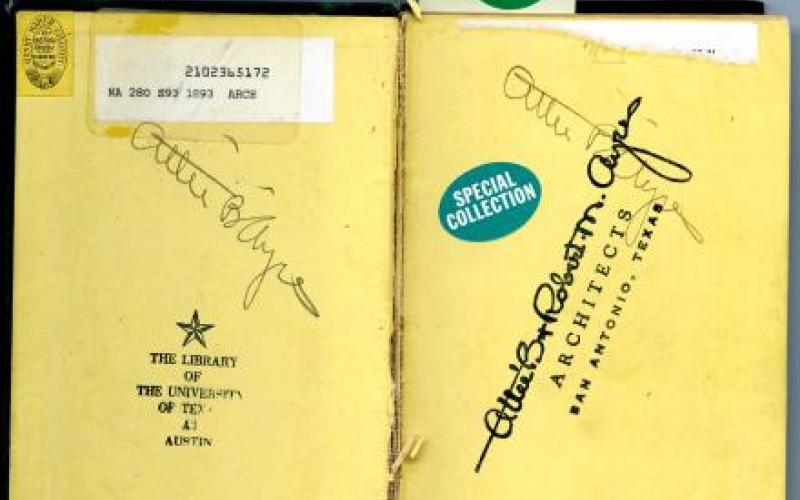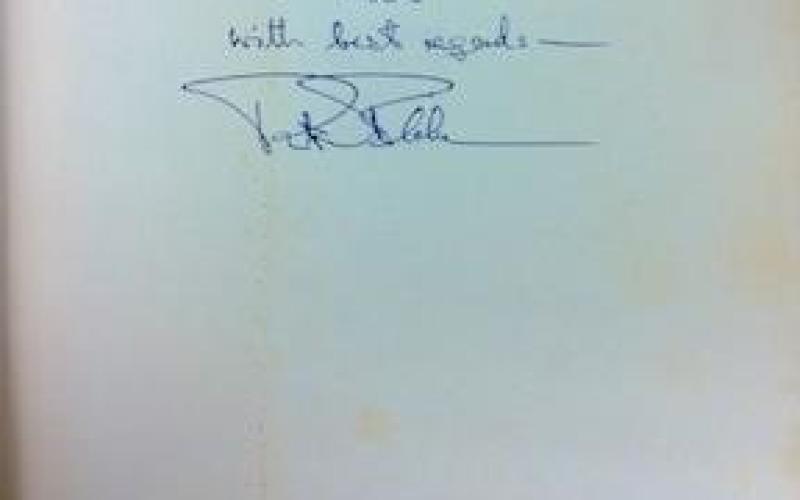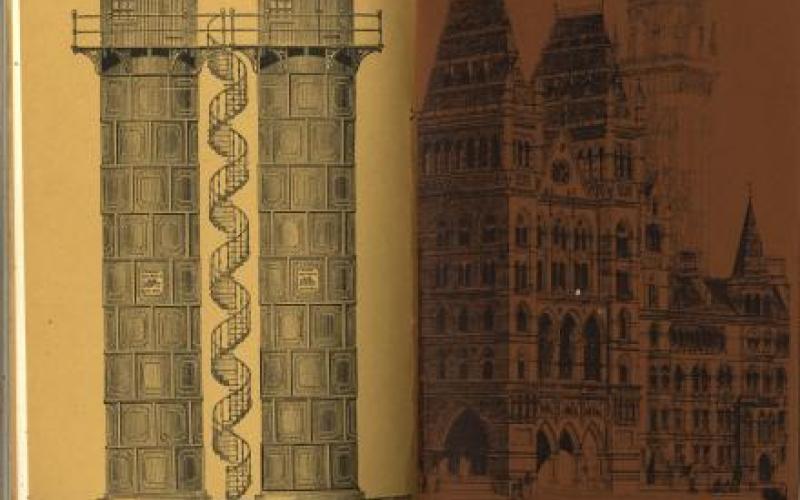
Firm Library of Ayres & Ayres Architects
San Antonio architects Atlee B. Ayres (1873-1969) and Robert Ayres (1898-1977) collected these books for their firm's library. The library was donated posthumously to the University of Texas Libraries in two disbursements—the first in 1979, and the second in 1983, along with the firm's archives. Drawings, papers, and photographic material were subsequently distributed to the Alexander Architectural Archive, while book and journal volumes were transferred to the Architecture & Planning Library.
Use: By appointment only

Personal Library of Karl Kamrath
The Karl Kamrath Library is a collection of architectural books assembled by prominent Houston architect and design critic Karl Kamrath, FAIA (1911-1988). The library was accessioned in 1987 and is part of the Karl Kamrath Collection containing architectural drawings, photographs, project documents, and ephemera, which is housed in the Alexander Architectural Archives.
Use: By appointment only

Weinreb Architectural Collection
In 1968, a proxy working on behalf of the University of Texas Libraries walked into book dealer Ben Weinreb’s London shop and purchased his entire stock. There was no catalog and many copies existed in duplicate or bulk. In 1970, a visitor to the university noted that these materials were still in boxes, but eventually over 50,000 books, journals, drawings and papers were assumed into the architectural book collection at the Harry Ransom Humanities Research Center where many volumes remain available to scholars and independent researchers.
Use: By appointment only

